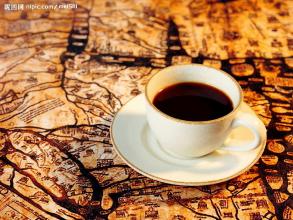An introduction to the flavor of the manor in El Salvador, the smallest coffee-producing country in Central America.
The civil war in 1980 caused government forces and guerrillas to deal a blow to the coffee industry, as well as natural disasters
And the sharp drop in international raw bean prices between 1986 and 1987 have had a negative impact on the coffee industry. in fact, 80 years ago, the foreign exchange earned by coffee also assisted the country's clothing industry and contributed to the Ministry of Light Industry.
And the marketing and export controlled by the government is even more disadvantageous to the whole industry! In the first year of the establishment of Incaf'e, coffee production fell from 175000 tons in 1979 to 141000 tons in 1986, of course, as a direct result of producers' reluctance to invest again; Incaf'e not only charged 50% of the export price of raw beans but also often delayed payment! Natural disasters and man-made disasters have led to good opportunities for organic planting. Of course, producers also realize that only good coffee can get a good price. In the 19th century, coffee in El Salvador was an important cash crop. Coffee in El Salvador was an important cash crop. The government legislated to levy taxes and encourage planting and export. Although coffee farmers in Saudi Arabia cannot get technical or financial assistance, they are quite excellent among many coffee producing countries in terms of the growth of production per hectare. The output value of coffee is like a locomotive, which contributes a lot to the basic transportation construction, the development of light industry and even the progress of mechanization.
The country has 10 per cent forest cover, of which more than 80 per cent is natural shaded woodland, which is ideal for the planting of coffee trees (shade grown coffee), which is very important for the Central American ecological corridor (Central American Biological Corridor). But in 1970, there was a serious coffee leaf rust spot (coffee leaf rust disease). In order to expose coffee trees to the sun, many shade trees were cut down! This has caused a lot of environmental damage! But the civil war has also taken a turn for the environment! the civil war in the 1980s made many coffee farmers in war zones unwilling to spend agricultural fertilizer on coffee plantations, creating the fact of "organic planting". After the war, coffee plantations with organic cultivation were set up with the assistance of the government, and many of them obtained the Eco-ok certification of the Rainforest Alliance (Rain forest-Alliance). At present, 2000 hectares of coffee plantations are organically certified, another 2000 hectares are in the process of being certified (it takes three years to apply for organic certification and El Salvador is the smallest, most densely populated and most industrialized country in Central America. The natural landscape is rich, and the volcanic topography is the biggest feature. there are three most famous volcanoes in the country: green hill < Cerro Verde >, Idozak < Izalco > and the Holy Tower. Anna < Santa Ana >. The most famous volcano, Yidsak, has the nickname "Pacific Lighthouse" because the flames emitted by early volcanoes have been used as a guide by sailors sailing in the Pacific, but they are now considered extinct volcanoes.
El Salvador is also part of the former Mayan Empire, and there are still more than 300 Mayan relics to visit, especially the monuments of San Andres: 210.41 million square kilometers.
Climate: tropical climate, with temperature changing slightly with altitude; heavy rainfall from May to November
Capital: San Salvador (San Salvador)
Language: Spanish; other: Indian dialect
Currency: kroner (Colon)

Important Notice :
前街咖啡 FrontStreet Coffee has moved to new addredd:
FrontStreet Coffee Address: 315,Donghua East Road,GuangZhou
Tel:020 38364473
- Prev

Smooth and meticulous Nicaraguan Coffee Manor flavor and taste introduction to Tianyi Manor
The pillar industry produces nearly one hundred thousand tons of coffee beans every year. Many people who have tasted Nicaraguan coffee usually think that it is no different from Salvadoran coffee or Honduran coffee. It is full-bodied, smooth and delicate, with a slightly bitter finish, like a faint taste in a wine. In many countries, coffee production will be seriously affected for political reasons. Nicaraguan coffee industry
- Next

Ecuador Coffee Manor introduction to Santa Cruz Manor planting environment
Ecuador is one of the few countries in the world that can provide Arabica and robusta coffee. Robusta coffee is mainly produced in the Ecuadorian jungle and seaside areas and is mainly used to produce instant coffee. for buyers who want to buy instant coffee in large quantities, Ecuador can be another choice for you, David, the new champion coffee from Ecuador.
Related
- Does Rose Summer choose Blue, Green or Red? Detailed explanation of Rose Summer Coffee plots and Classification in Panamanian Jade Manor
- What is the difference between the origin, producing area, processing plant, cooperative and manor of coffee beans?
- How fine does the espresso powder fit? how to grind the espresso?
- Sca coffee roasting degree color card coffee roasting degree 8 roasting color values what do you mean?
- The practice of lattes: how to make lattes at home
- Introduction to Indonesian Fine Coffee beans-- Java Coffee producing area of Indonesian Arabica Coffee
- How much will the flavor of light and medium roasted rose summer be expressed? What baking level is rose summer suitable for?
- Introduction to the characteristics of washing, sun-drying or wet-planing coffee commonly used in Mantenin, Indonesia
- Price characteristics of Arabica Coffee Bean Starbucks introduction to Manning Coffee Bean Taste producing area Variety Manor
- What is the authentic Yega flavor? What are the flavor characteristics of the really excellent Yejasuffi coffee beans?

